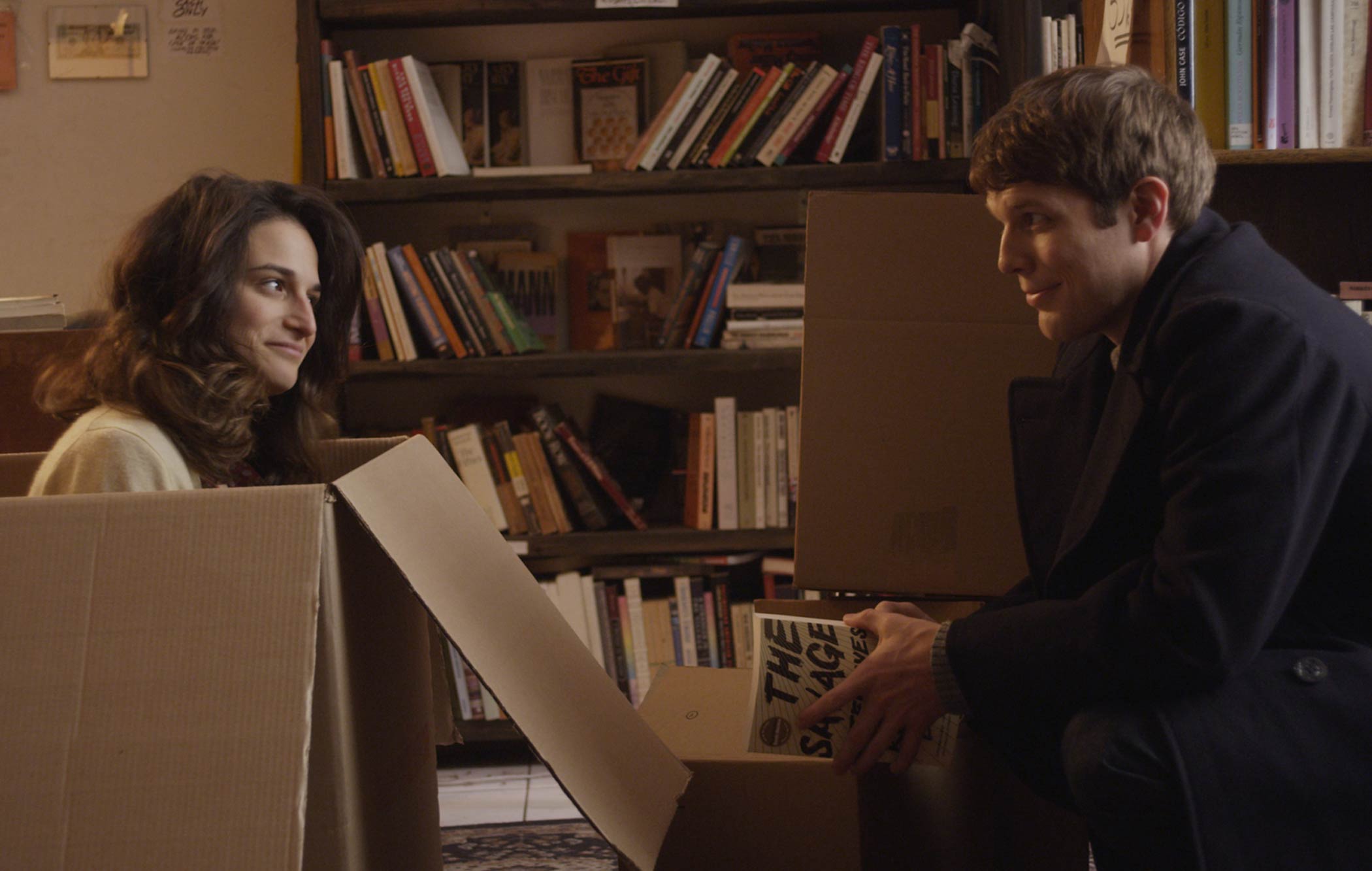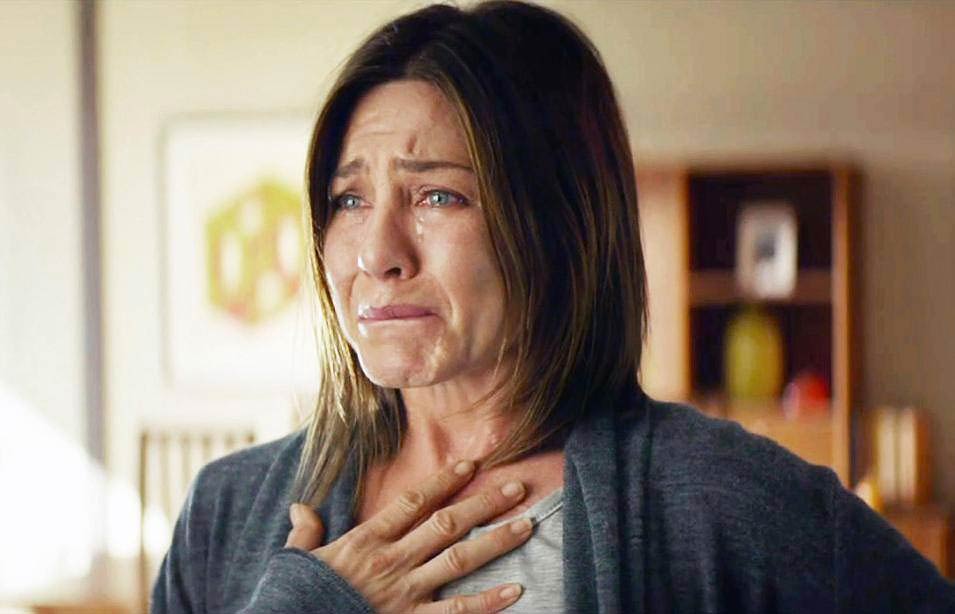In 2014, health-centered films were some of the most watched and most applauded. Films like The Theory of Everything and Still Alice are nominated for Oscars, and The Fault in Our Stars made well over $124 million at the box office. But how true to health were they?
We asked medical experts, from Alzheimer’s physicians to pain specialists, to grade five of this year’s films for medical accuracy and the authenticity of patient experience. Find out which passed with flying colors—and which ones need a checkup.
The Theory of Everything

The film tells the story of Stephen Hawking, the brilliant physicist who lives with amyotrophic lateral sclerosis (ALS) or Lou Gehrig’s disease. It’s nominated for five Oscars: Best Picture, Best Actor, Best Actress, Best Original Score and Best Adapted Screenplay.
Reviewer: Dr. Jeffrey D. Rothstein, director of the Brain Science Institute and the Robert Packard Center for ALS Research at Johns Hopkins University
Grade: A
What the film got right: In summer of 2014, the Ice Bucket Challenge forever and dramatically changed our exposure to ALS, a relatively rare and fatal neurological disease. As a physician scientist experienced in diagnosing patients with ALS, caring for them, and carrying out research on the disease, I always feel it’s important that Hollywood portray medical disorders accurately. It’s as important as getting the plot right. In my opinion, the director, writers and, most importantly, the actors did a pretty darn good job at educating viewers about this condition.
First, the film authentically portrays the subtle and typical early-onset changes that characterize the disease, like the occasional tripping, fumbling or dropping of objects. These changes reflect early hand, foot and leg muscle weakness. The slowing of Hawking’s walk, his clumsy writing and his stumbling when he tries to walk up steps and hold chalk are all common in the early stages of the disease. The actor also so movingly and faithfully shows the terrible frustration patients feel when simple tasks like eating and picking up a spoon become so difficult. The loss of these simple actions rob an individual of their independence in daily activities. The film’s depiction of Hawking’s eventual tracheotomy—the hole in the windpipe which allows for better breathing—accurately shows the tragic loss of speech and communication, and the terrible and primitive way patients years ago had to spell out words to produce simple sentences. The film also successfully relays the emotional and physical stress ALS places on spouses and loved ones. I’ve seen it often in my own practice.
What the film got wrong: The discussion Hawking and his doctor have about his diagnosis in a hallway is not how physicians tell a patient about such a terrible and impactful diagnosis. It lacks the privacy and respect you need when you’re meeting with a patient, and I hope Hawking had a more appropriate encounter in real life. Sometimes movies get everything wrong when it comes to diseases and treatments, but overall, I don’t think The Theory of Everything got much wrong at all.
Still Alice

A well-respected linguistics professor at Columbia University, Dr. Alice Howland, is diagnosed with early-onset Alzheimer’s disease. The film is Oscar-nominated for Best Actress.
Reviewer: Dr. Kristine Yaffe, professor of psychiatry, neurology and epidemiology at University of California, San Francisco and member of the Alzheimer’s Association Medical & Scientific Advisory Council
Grade: B
What the film got right: In Still Alice, we watch a highly accomplished woman trying to hold onto her life while future is transformed by Alzheimer’s disease. Julianne Moore, who plays Alice, is successful at capturing the initial memory and interrupted thought symptoms of the disease, followed by denial, then attempts at control, and finally solace and grace.
Since Alzheimer’s disproportionately affects women, the focus on a woman keeps with the statistics. Women are at slightly higher risk of developing Alzheimer’s, and many more women have the disease because they live longer. It almost goes without saying that women are also much more likely to provide care to people with dementia.
Scientifically, the first phase of Alice’s symptoms and the encounter with her consultant neurologist are very realistic and deeply moving. The movie accurately demonstrates the early word-finding challenges, occasional memory lapses and sense of becoming overwhelmed in once familiar situations.
What the film got wrong: The course of Alice’s decline from Alzheimer’s was too fast by almost any standard. The character went from early symptoms while lecturing at a conference in Los Angeles to being almost mute, not recognizing her daughter and requiring full-time care all in about a year. While this helps the tempo of the movie, it does not match the often decade-long disease progression we see.
The viewer may also inaccurately conclude from the movie that Alzheimer’s disease is more definitively diagnosed with neuroimaging (brain scans such as PET and MRI) than it can be, and more genetically influenced than it often is.
Neuroimaging is among the most promising areas of research focused on early detection of Alzheimer’s, but for now, these tests are appropriately used only to clarify a difficult diagnosis when it is not clear what is causing the dementia symptoms. It’s also used for unusual cases, such as early onset of symptoms.
Slight reference is given in the film to the young onset type of Alzheimer’s being more grounded in genetic risk. But the jump to genetic testing on the second medical visit, followed by testing Alice’s children and even possibly the pregnant daughter’s offspring was unrealistic and over-simplified. It is important to note that young onset Alzheimer’s affects perhaps only 2 or 3% of the total population of people with the disease—or about 200,000 out of the more than 5 million people living with Alzheimer’s in the U.S. today.
It was hard for me to connect with any character other than Alice and her youngest daughter. They were the only ones in the film with real intimacy, emotion and connection. In real life, Alzheimer’s disease explodes family dynamics and pushes the diagnosed individual and their family to deal with a disease that slowly strips an individual of certain strengths.
Obvious Child

A young woman has a one-night stand, an unplanned pregnancy and an abortion.
Reviewer: Dr. Mary Jane Minkin, professor of obstetrics, gynecology and reproductive sciences at Yale School of Medicine
Grade: B
What the film got right: In Obvious Child, Donna, a 28-year-old aspiring stand-up comic, breaks up with her boyfriend and meets Max, a very eligible young man who has shown up at her comedy club. They hit it off immediately; much alcohol and a wild night of sex ensue. As you correctly surmise, she conceives, and ultimately at the movie’s end she has an abortion, with Max’s emotional support.
The film brings attention to some very important themes. One half of the pregnancies that occur in this country are unplanned. Donna is drinking way too much alcohol to conceive a healthy pregnancy. Max speaks about how much he wants to be a father, and one would certainly hope that their relationship will develop well. As an obstetrician, I’d like to see a happy ending: Donna’s stand-up career takes off, she stops drinking such a significant amount of wine, she starts taking a folic acid vitamin every day, and then she conceives. (And of course they live happily ever after!) But that’s not exactly how things play out. However, Donna’s pregnancy symptoms, sore breasts and nausea, were accurately depicted, as was her use of a home pregnancy test kit.
What the film got wrong: One primary “obvious choice” wasn’t made in the film. After the liaison, one would expect a sophisticated New Yorker to think to herself that during a very intoxicated evening, a condom might not have been used correctly, and that she should proceed to her nearest pharmacy to purchase a morning after contraceptive. Morning after contraception is widely available over the counter to women of all ages, and is extremely effective when used right after the event, actually up to 72 hours later, and is very well tolerated. But then we would have had no movie!
Donna, quite reasonably, goes to an office of Planned Parenthood. However—and this is what’s most problematic to me—the physician there tells Donna that she is “too early for an abortion.” Donna is about 5 weeks from her last menstrual period, or about 3 weeks pregnant. The doctor is quite correct in suggesting that a suction abortion would not be the appropriate choice at this point, since the gestational sac is so small that it might well be missed during the procedure. But the doctor does not mention any of the medicinal methods of termination, such as the RU-486 pill, which is ideal to use earlier in the gestation. Then again, if Donna takes RU 486, we have no drama. Donna won’t be waiting for two weeks, and we wouldn’t overhear the discussion Donna has with her mother about her mother’s experience having an illegal abortion in the 60s. There would be no dramatic scene in the waiting area of the clinic. Women using RU 486 miscarry at home, and not on a schedule.
The Fault in Our Stars

A love story about teenage cancer patients who meet in a support group.
Reviewer: Steven Gonzalez, teenage leukemia survivor and member of MD Anderson Children’s Cancer Hospital’s teen advisory council
Grade: A
What the film got right: At age 12, I was diagnosed with AML leukemia and was given a 2% survival chance. That year entailed a lot of chemotherapy, a bone marrow transplant and about 130 days of isolation in the hospital and at home. Though I try not to, I tend to view any cancer-related literature with a pretty critical eye. There’s simply too many little details, emotions and events that are left out. The Fault in Our Stars was different, however, and captured a lot of those little details that are so rarely shown.
For starters, the nonchalant way that the characters addressed cancer was spot-on. I’ve found that the ability to joke about cancer is pretty common among survivors and a lot of patients. For us, it’s a topic that we have lived with and have become more or less comfortable with. I’ve found that cancer survivors make some of the best cancer-related jokes. I also have to applaud the characters’ emotional breakdowns. For example, when one of the main characters, Augustus, breaks down by a gas station, he wasn’t crying for sympathy or attention. He was just too medicated or had too many emotions with no way of controlling them. Those scenes gave me flashbacks.
Another accurate moment was when Hazel’s mom tells her, “It’s okay to let go.” That foggy, in-and-out, dream-like state is exactly what I remember experiencing as a doctor told me, “You’re gonna be alright, bud,” right before my treatment took effect. The movie also gets points for not portraying the whole bald-but-somehow-still-has-eyebrows look that some television shows and movies seem to like.
While I understood why everyone else in the theater was crying at the end, I had a different reaction. I thought the ending was happy. I felt the movie captured the tiny details and I felt like my story was finally being told right. The movie reminds us that even though Augustus and Hazel had little time together, they made the most of it and enjoyed every moment. That is the ultimate end goal in life.
What the film got wrong: The film has a few flaws. The biggest problem I had was that while it made an effort to include details of life with cancer that aren’t usually depicted, it still showed a very Hollywood approach. At first I couldn’t put my finger on it, but after rewatching the movie, I think it boils down to the fact that cancer just isn’t that neat and clean. Literally. It involves a lot of emotions, bodily changes and a lot of bodily fluids coming out in many different ways. I’m not trying to say that cancer is all sadness and pain all day every day—some of my fondest memories, in fact, came from that year I had cancer—but it still feels like an overly polished view. Cancer can be one of the messiest-sterile environments, and The Fault in Our Stars doesn’t quite capture that concept.
Cake

A drama about a grieving woman suffering from chronic pain and painkiller addiction, Cake was nominated for a Screen Actors Guild Award and Golden Globe Award.
Reviewer: Dr. Charles Kim, a pain specialist at Rusk Rehabilitation at NYU Langone Medical Center
Grade: B+
What the film got right: Cake embarks on a very difficult task of exploring the complicated condition of chronic pain in a way that people can hopefully appreciate and sympathize with. The movie cogently touches on many things I have seen in some of my patients, such as isolation, depression, addiction and self-realization. Also quite accurate in some patients are the pill-hoarding behaviors, sleeplessness and painful sex depicted in the film. Chronic pain can be described as a nebulous and complex medical condition, at best. It is poorly understood in the medical world and traditionally thought of as a symptom and not a disease condition. But it afflicts about one in five Americans—about 60 million people, more than diabetes, heart disease and cancer combined.
It was quite apparent to me as a clinician that Claire, played by Jennifer Aniston, was not only inappropriately overusing the pain medications OxyContin and Percocet for her physical pain, but was also self-treating underlying depression from her unresolved grief over the tragic loss of her son. It becomes a vicious cycle. She needs higher and higher doses of these pills, likely due to her built-up tolerance. This under-recognized vulnerability is often experienced with chronic use of painkillers, but often goes untreated until it is too late. Chronic pain is associated with suicide, a point Cake doesn’t hesitate to make known. In fact, chronic pain sufferers are up to three times more likely to commit suicide than those in the general population, presumably due to insufficient control of pain and under-recognition of coexisting depression.
From a clinical perspective, Cake is a well-executed and contemplative peek into the dark world of uncontrolled chronic pain, depression, and addiction. The film can be thoroughly appreciated by those who have chronic pain, or those close to them, and appreciated by those who have seen the gratifying life outcomes that occur when the condition is well-controlled and managed.
What the film got wrong: Some parts of the film are exaggerated and amplified for theatrical effect, such as the fuzziness separating the boundaries of hallucination and reality, or the desperate trip to Tijuana for more medication. Very rarely are chronic pain patients in the extremes of hallucination-driven, desperate addictive behaviors. Overall, I give Cake a B+: a “B” for the respectable attempt to tackle the 800-pound gorilla of chronic pain, despite some of the glorified theatrics and excesses, and a “+” for Jennifer Aniston’s laudable portrayal of a chronic pain sufferer in our society.
More Must-Reads From TIME
- The 100 Most Influential People of 2024
- The Revolution of Yulia Navalnaya
- 6 Compliments That Land Every Time
- Stop Looking for Your Forever Home
- If You're Dating Right Now , You're Brave: Column
- The AI That Could Heal a Divided Internet
- Fallout Is a Brilliant Model for the Future of Video Game Adaptations
- Want Weekly Recs on What to Watch, Read, and More? Sign Up for Worth Your Time
Contact us at letters@time.com